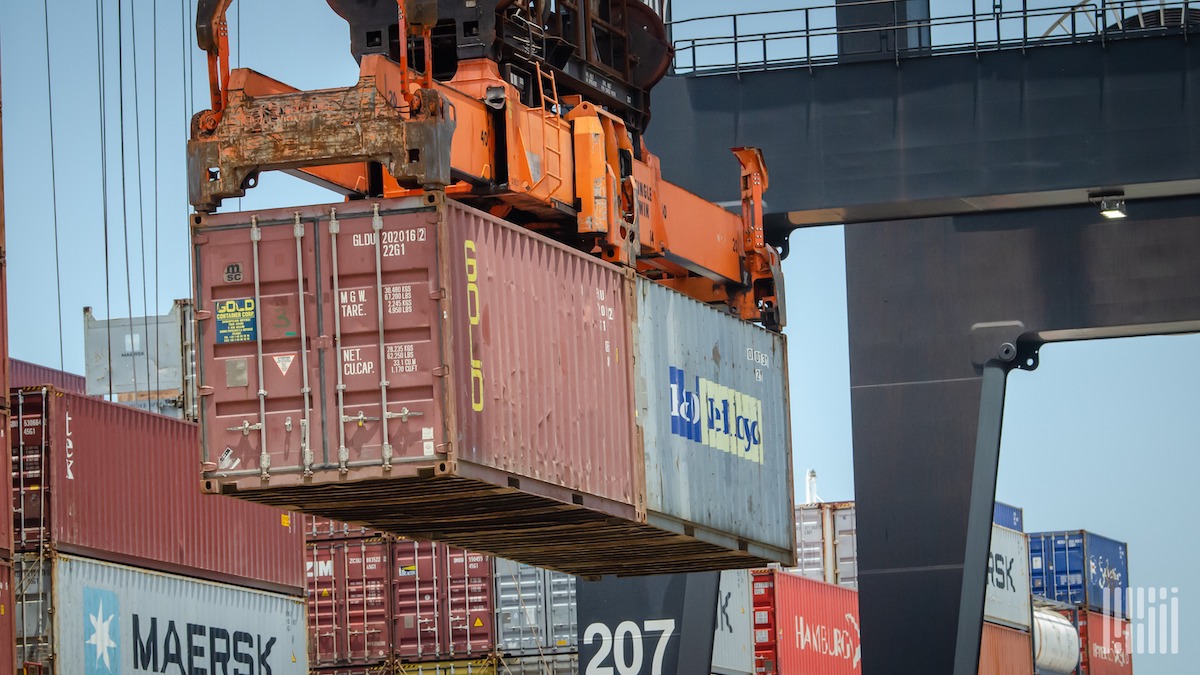Retailers expect container import decline to accelerate in ’26
Stores and warehouses are full of holiday merchandise after tariff anxiety led shippers to bring in goods earlier than usual, a retail trade group said, but warned declining container imports through U.S. ports are expected to accelerate in 2026.
The National Retail Federation and Hackett Associates said that the latest data on U.S. ports volume covered by the Global Port Tracker totaled 2.1 million twenty foot equivalent units (TEUs) in September, off 9.3% from August and 7.4% lower year-on-year.
The NRF forecast calls for October volume of 1.99 million TEUs, a decrease of 11.5% y/y, and November volume of 1.85 million TEUs, down 14.4%. Expected December traffic is forecast at 1.75 million TEUs, down 17.9%.
“Following July’s peak of 2.39 million TEUs, November and December would be the slowest months of the year,” the NRF said in a release. “And December would be the slowest month since 1.62 million TEUs in March 2023.”
Those comparisons came against record volumes in some 2024 months as shippers also brought goods forward then, ahead of an October strike by union dockworkers at East Coast ports.
The trade group is forecasting that 2025 holiday sales will increase between 3.7% and 4.2% y/y, to just over $1 trillion.
“We’ve spent most of the year worried about the impact of tariffs on both inflation and the supply chain but the holiday season is here and mitigation efforts appear to have paid off,” NRF Vice President for Supply Chain and Customs Policy Jonathan Gold said, in a release. “Store shelves are well-stocked and the effect on prices has been minimized, largely thanks to retailers taking steps like frontloading imports during times of low or delayed tariff increases or absorbing the costs themselves.
“Consumers should be able to find the products they want at prices they like.”
Hackett Associates Founder Ben Hackett said the on-again, off-again tariff policy waged by the U.S. and China has complicated long-term planning for importers and ocean carriers.
“These conditions make market forecasting highly uncertain,” Hackett said. “Our trade outlook is for a small decline in imports this year compared with 2024 and a further, larger decline in the first quarter of 2026.”
While higher retail prices and layoffs stalk the U.S. economy, there have been some reasons for optimism in container shipping. While rates have seen some recent weakness, volumes have for the most part remained steady despite the global trade reset. Carriers continue to order new ships at a record pace, and reports say China is mulling plans for a 27,000-TEU behemoth, which would be the largest box vessel ever built. This week, executives with Maersk (MAERSK-B.CO) met with Suez Canal officials to discuss a return of the world’s second-largest liner operator to the Red Sea route. Global carriers have avoided the region since Houthi militia began attacking merchant shipping there shortly after the start of the Gaza war in late 2023.



Leave a Comment
Your email address will not be published. Required fields are marked *